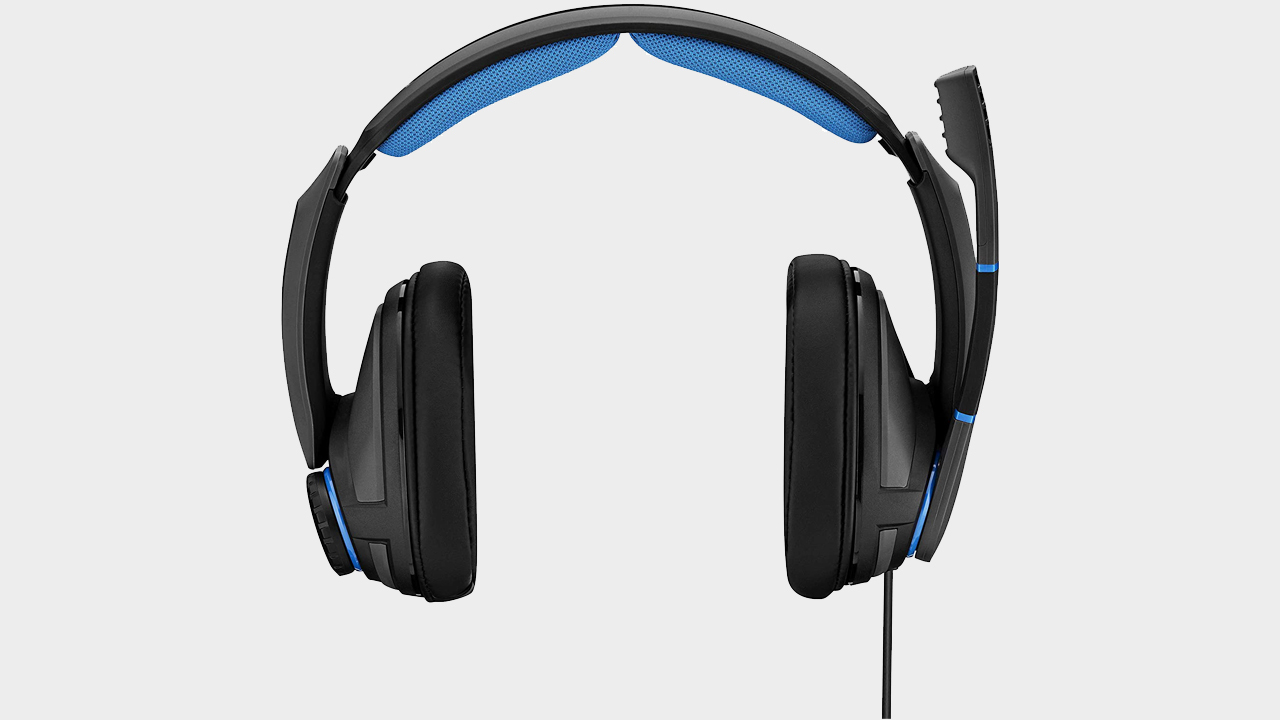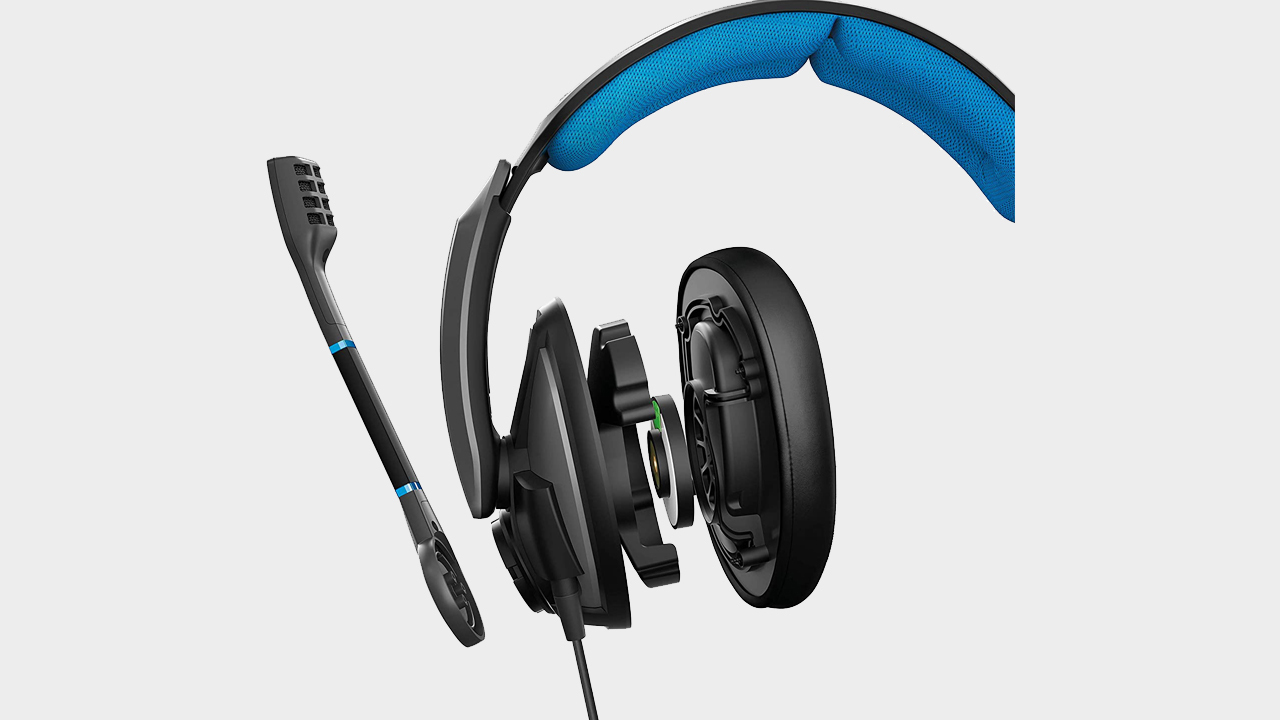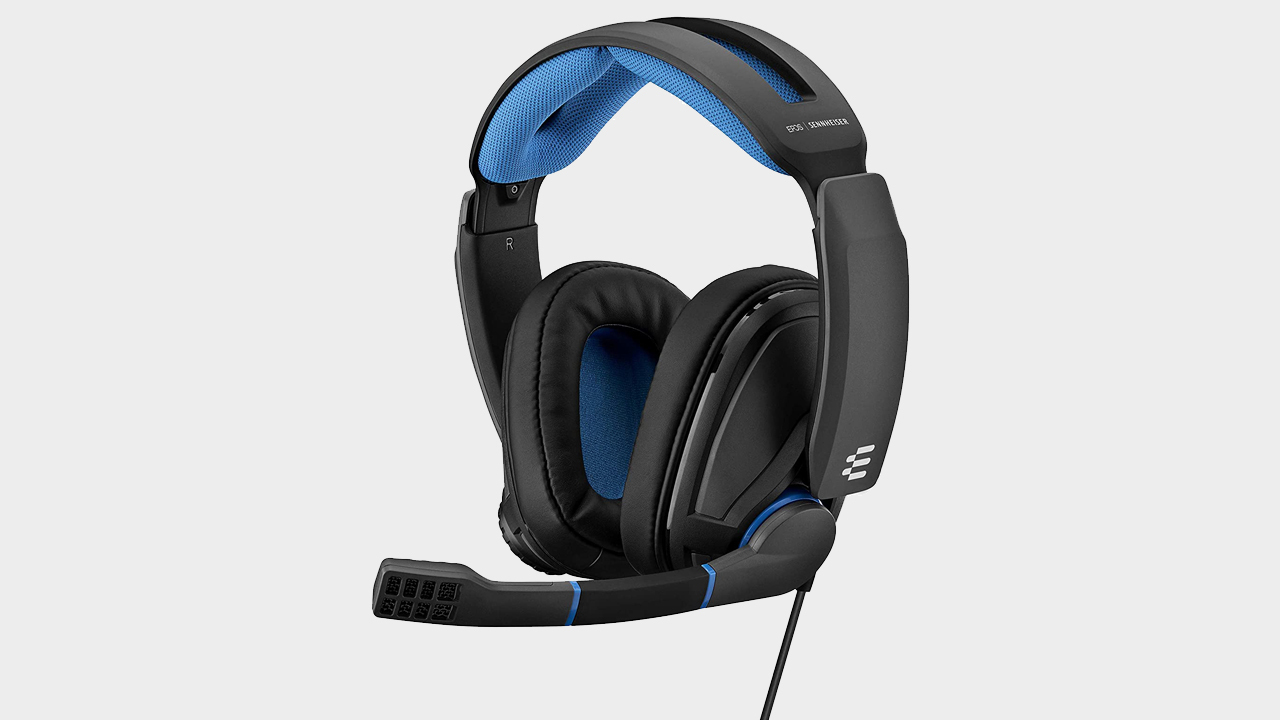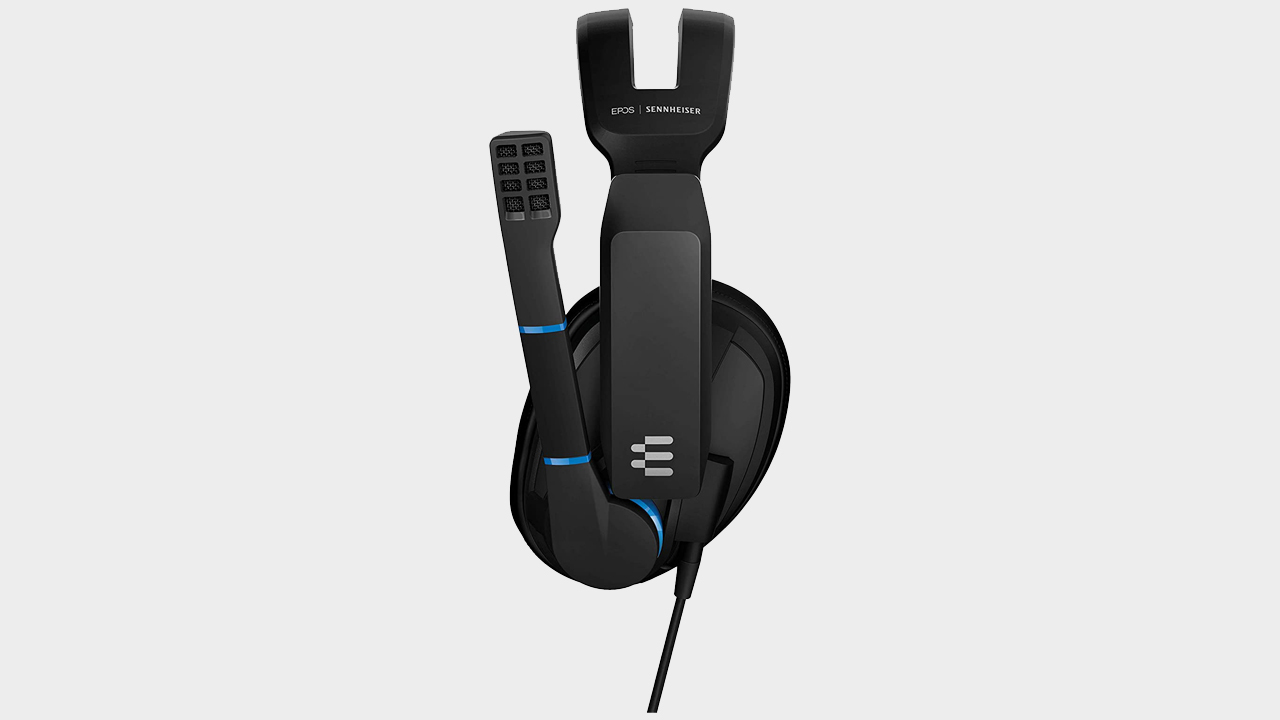GamesRadar+ Verdict
Excellent and affordable Sennheiser quality makes this headset a great choice for any platform - despite a slightly wobbly design and a limited feature set.
Pros
- +
Sennheiser-quality audio
- +
Excellently clear mic
- +
Comfy
- +
Versatile
- +
Affordable (for Sennheiser)
Cons
- -
No chat/game audio balancer
- -
Limited features
- -
Design is a bit loose/wobbly
Why you can trust GamesRadar+
Another Sennheiser gaming headset enters the fray. However, the Sennheiser GSP 300s shrug off the usual characteristic of being extremely premium in price tag (like the GSP 670s and the GSP 370s to some extent), offering a headset for use with all devices for less than three figures. (Note: you may also find these listed as 'EPOS | Sennheiser GSP 300' following the joint venture announced this year.)
Design
Immediately identifying itself as a Sennheiser headset, the GSP 300s feature a similar shape and form to its more expensive siblings. The oval-shaped cushions are comfy, and its head-band cushioning is not over the top. And although it is a bit big overall - particularly so with the boom mic factored in - it's comfortable.

At 600g it sits in the Goldilocks territory of 'just right' when it comes to weight, in my opinion; not too heavy and not too light. My only concern here is that it often feels like both a well-built headset and also a mediocre one. The individual parts are great and sturdy and solid, but the overall build feels flimsy in your hands before you put it on your head... where clamping onto your bonce seems to be part of, and key to, its structural integrity.
Features
EPOS | Sennheiser is the new moniker that gaming headsets from the audio behemoth will now be released under, but that doesn't dilute everything that we've come to know and love about their audio quality for the Sennheiser GSP 300. You'd be forgiven for thinking otherwise, though; a key feature of the GSP 300s is price point, mostly thanks to the headset's limited nature.

In short, there are barely any bells or whistles. There are no onboard features on either cups aside from the volume control to the right and the boom mic (which auto mutes in the upright position) on the left, and nothing on the cable (which is automatically a dual green and pink) at all. And that's it - that's the features reviewed. It's a supremely stripped-back headset in this department, leaving you to rely on Razer's THX Spatial audio app if you're playing on PC for more versatility.
Basically, the Sennheiser GSP 300 leaves its audio to do the talking - more on that below.
Performance
Across a number of games, the Sennheiser headset proved that it doesn't require a host of features to do a brilliant job. One of my best experiences is using it for The Last of Us Part II, where the Sennheiser audio quality really shines through. Audio cues and details are presented with clarity, even if they are incredibly subtle or the noise is seemingly simple. It is also incredibly useful when encountering large groups of enemies, providing such good audio assistance in locating them that at times I don't even need to use the characters' listening mode to position myself and prepare. The noises of the infected enemies also deserve a mention here as the 300s are brilliant at portraying every gruesome and gritty noise straight to my brain with disgusting and eerie excellence. The headset really ups the ante on the suspense and terror. This audio excellence is also true in Control, and the concrete-formed echoes, environmental sounds, and also the supernatural noises of The Hiss and Jesse's powers are exquisite.

Moving that tension and suspense into shooters online, the GSP 300s are great companions for Apex Legends with the audio brilliance helping me out enormously and carrying me through some shootouts with other players. The sounds were crisp, the accuracy was excellent, and the experience is a joy, knowing I can rely on the sound to be as good as it is for detection and general enjoyment. This even extended to some older shooters like Battlefield 4 that I've been catching up on recently, with the sounds of enemies clear, and the portrayal of warzone conflict and gunfire proving bombastic, large, and fabulous to immerse oneself in - it really does elevate that slightly older game through excellence in audio.
Online co-op action and shooter games where communication is key is an area in which the GSP 300s really excels, however. Playing Breakpoint and The Division 2 with my friends is fantastic. The game audio is presented with all the excellence that I've mentioned above, and even the weather patterns of each of these worlds is presented to my lugholes wonderfully. Yet the mic really comes into its own with my voice cutting across and through very well. The first thing my teammates said when I started using the GSP 300s was how clear and exceptionally well-captured my voice was (clearer even than my PS4 Platinum Headset). Managing jeopardy-filled encounters up and down the streets of ruined Washington D.C. with waves of enemies coming from all sides, or carefully calculating a stealth attack on a wolf base in Breakpoint's Auroa, the audio is a thrill and combines beautifully with the clear mic.

The EPOS | Sennheiser GSP 300 headset really benefits from having a quality boom mic too, and the extra clarity that offers is not lost on my playing partners (though this feature makes the headset one to avoid for using on the commute in reality, and it's far better when tethered to a console or PC).
Nevertheless, I really do miss the chat-to-game audio balance feature. It's something I mention with almost every headset review I do, and I'm surprised it isn't a feature that's more prevalent. However, this might just be an acceptable omission of a mid-range Sennheiser headset like this where features could be deemed to be kept to a minimum to help reduce cost.
In terms of other media, it does hold its own with that famous Sennheiser expertise imbued in all that the headset can do. As a result, you wouldn't be disappointed with it for music or movies. It's still best for games though, and its 15-26,000Hz range really is put to great use and shows off why Sennheiser maintain a quality game-audio reputation.
Overall - should you buy it?
Getting a Sennheiser-quality headset like this, at this price point, and with this device-versatility, is an excellent proposition and one that is easy to recommend. It might not lend itself as naturally to being a top Nintendo Switch headset or for use as a mobile gaming set, due to its non-detachable microphone and size, but for any other device, this is a great choice that will not leave you disappointed. The price tag is mainly for the Sennheiser name and the Sennheiser quality but it's a great look for the new EPOS | Sennheiser brand. I'd really like some more features on a headset of this price, like some of the Razer headsets we've grown to know and come accustomed to.
But it's still my backup headset for when my PS4 Platinum headset runs out of battery or is charging - a position which is a great luxury, I'll admit - and that demonstrates its capability and quality overall. Despite it being light on features, given its sheer bang for buck, this is still one of the best gaming headsets I've tested recently - and, from my personal experience, one of the best PS4 headsets overall, too.
Rob is the Deputy Editor of sister site, TechRadar Gaming, and has been in the games and tech industry for years. Prior to a recent stint as Gaming Editor at WePC, Rob was the Commissioning Editor for Hardware at GamesRadar+, and was on the hardware team for more than four years, since its inception in late 2018. He is also a writer on games and has had work published over the last six years or so at the likes of Eurogamer, RPS, PCGN, and more. He is also a qualified landscape and garden designer, so does that in his spare time, while he is also an expert on the virtual landscapes and environments of games and loves to write about them too, including in an upcoming book on the topic!




